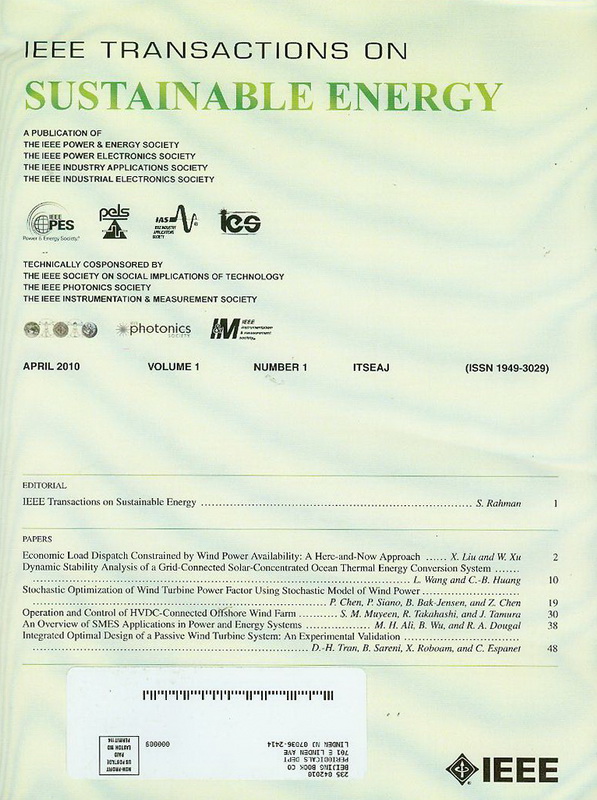风电一体化两区电力系统的分散综合惯性控制
IF 10
1区 工程技术
Q1 ENERGY & FUELS
引用次数: 0
摘要
由于依赖电力电子转换器的可变发电源的集成增加,现代电力系统的稳定性可能会下降。一种常见的控制策略是结合风力涡轮机的综合惯性,通常在假设均匀频率的单区域电力系统模型中使用状态反馈控制。随着电力系统的互联程度越来越高,不同的频率行为可能会在多个区域出现,这让人们对目前没有考虑多区域稳定性的方法产生了怀疑。此外,大多数单区域综合惯性方法忽略了实际电力系统中通信系统的局限性。提出了一种具有风电的两区电力系统的分散综合惯性控制策略。该方法考虑了电力系统在不同区域的实际行为和通信系统在实际场景中的局限性。利用智利电力系统实际运行数据建立的动态模型的数值计算结果表明,分散控制与集中控制在维持电力系统稳定和优化频率最低点方面具有相当的效果。然而,分散控制的优点是只依赖于局部变量,在操作过程中不需要区域之间的通信联系。本文章由计算机程序翻译,如有差异,请以英文原文为准。
Decentralized Synthetic Inertia Control for Two-Area Power Systems With Wind Integration
Modern power systems may experience decrease in stability due to the increased integration of variable generation sources that depend on power electronics converters. A common control strategy is to incorporate synthetic inertia from wind turbines, typically using state-feedback control in a single-area power system model that assumes uniform frequency. As power systems become more interconnected, different frequency behaviors can emerge in multiple areas, casting doubt on current methods that do not consider multi-area stability. Furthermore, most single-area synthetic inertia methods ignore the limitations of communication systems in real power systems. This paper proposes a decentralized synthetic inertia control strategy for a two-area power system with wind power. This approach accounts for the actual behavior of power systems in different areas and the limitations of communication systems in real scenarios. Numerical results, derived from dynamic models using actual operating data from the Chilean Power System, demonstrate that the decentralized control performs comparably to centralized control in maintaining power system stability and optimizing frequency nadir. However, the decentralized control has the advantage of relying solely on local variables, eliminating the need for communication links between areas during operation.
求助全文
通过发布文献求助,成功后即可免费获取论文全文。
去求助
来源期刊

IEEE Transactions on Sustainable Energy
ENERGY & FUELS-ENGINEERING, ELECTRICAL & ELECTRONIC
CiteScore
21.40
自引率
5.70%
发文量
215
审稿时长
5 months
期刊介绍:
The IEEE Transactions on Sustainable Energy serves as a pivotal platform for sharing groundbreaking research findings on sustainable energy systems, with a focus on their seamless integration into power transmission and/or distribution grids. The journal showcases original research spanning the design, implementation, grid-integration, and control of sustainable energy technologies and systems. Additionally, the Transactions warmly welcomes manuscripts addressing the design, implementation, and evaluation of power systems influenced by sustainable energy systems and devices.
 求助内容:
求助内容: 应助结果提醒方式:
应助结果提醒方式:


